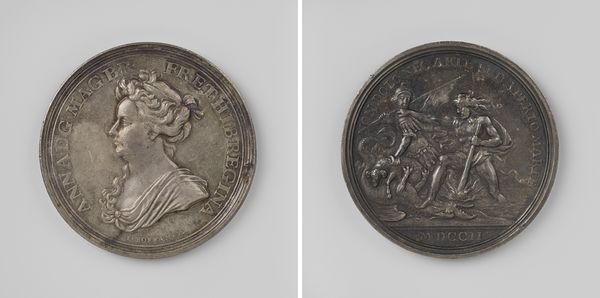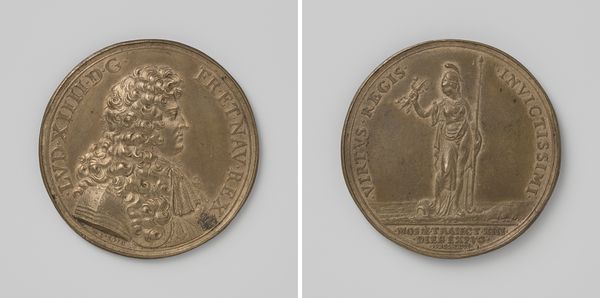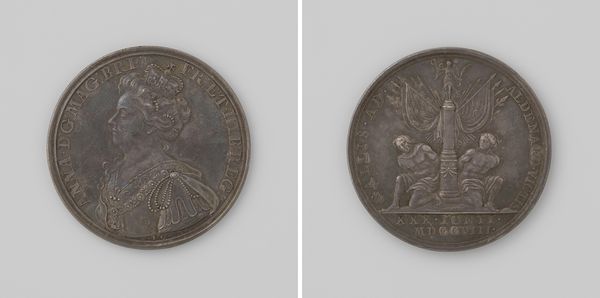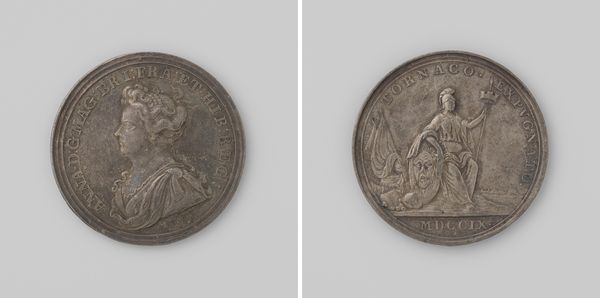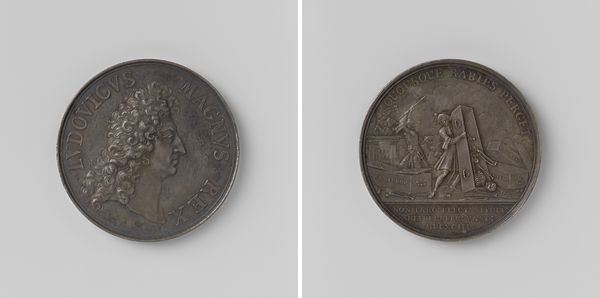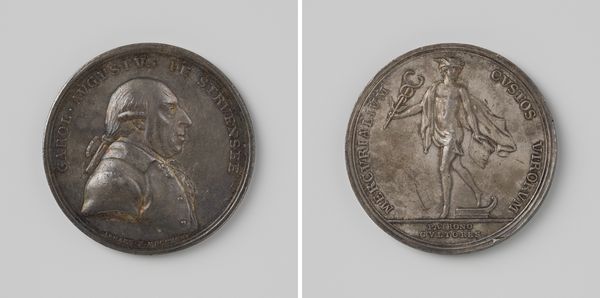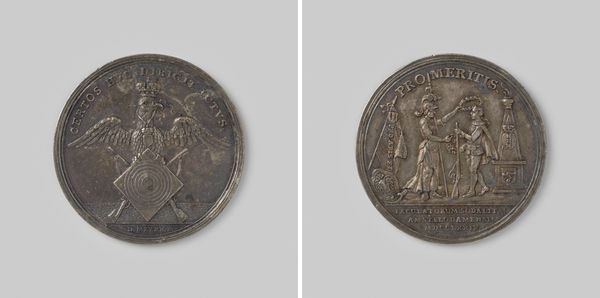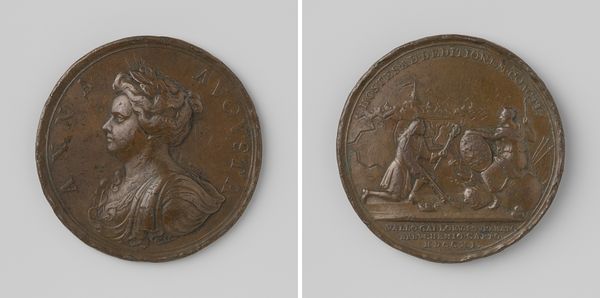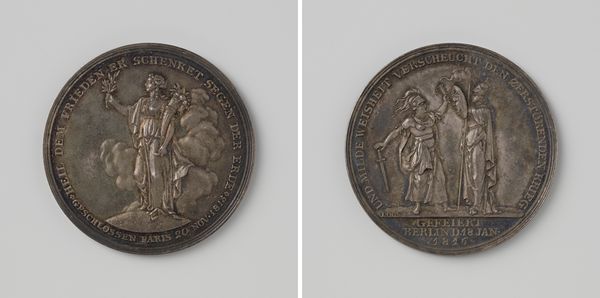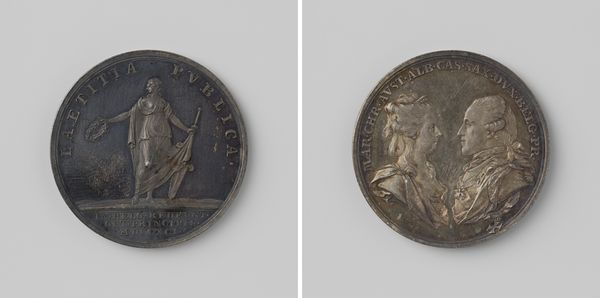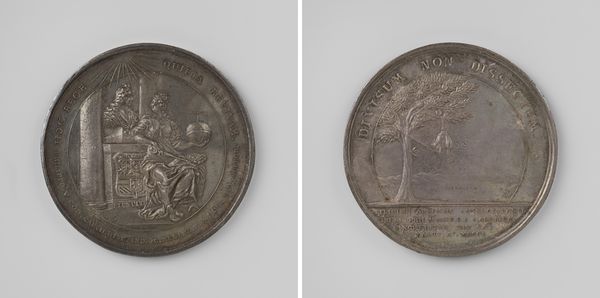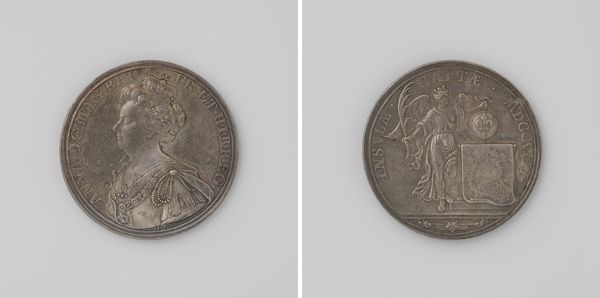
metal, relief, sculpture
#
portrait
#
baroque
#
metal
#
sculpture
#
relief
#
sculpture
#
history-painting
Dimensions: diameter 4 cm, weight 22.65 gr
Copyright: Rijks Museum: Open Domain
Editor: This is "Gibraltar ingenomen en de Franse vloot verslagen bij Malaga," created in 1704 by John Croker. It appears to be a metal relief sculpture, maybe a coin or a medallion? The imagery is striking, quite baroque I think, very celebratory and grand. What do you see in this piece? Curator: Indeed, it's a fascinating object that tells us much about the political and social climate of its time. Medals like this served as powerful propaganda tools. They were commissioned to commemorate significant events and shape public opinion. Editor: So it's not just art for art's sake? Curator: Rarely! Look at the imagery closely. One side shows a portrait of Queen Anne, crucial to legitimizing power. The other side depicts Britannia, goddess and embodiment of Britain, and Neptune celebrating the naval victory. How does that juxtaposition strike you? Editor: It feels… intentional, of course. It’s presenting the Queen as the driving force behind this victory, almost deifying her by association with these powerful figures. Curator: Precisely. And consider the material - metal. It’s durable, lasting. It signifies permanence, power, wealth. It allows for mass production, spreading the message widely. These medals weren't simply documenting history; they were actively constructing it. Editor: So it's like a 18th-century press release, but in metal. Curator: Exactly! Thinking about the intended audience also gives more insights, not just nobility, it trickled down to people who supported their agenda. This work isn’t about aesthetics alone; it’s a meticulously crafted statement of political might. Editor: That's really fascinating. It makes me think differently about all art made during times of conflict or change. Curator: Understanding the political purpose shapes how we see its value. Each detail then speaks to the broader power structure of the time. Editor: Definitely. It’s given me a lot to think about! Thank you for pointing out the historical context that's embedded in this work.
Comments
No comments
Be the first to comment and join the conversation on the ultimate creative platform.
